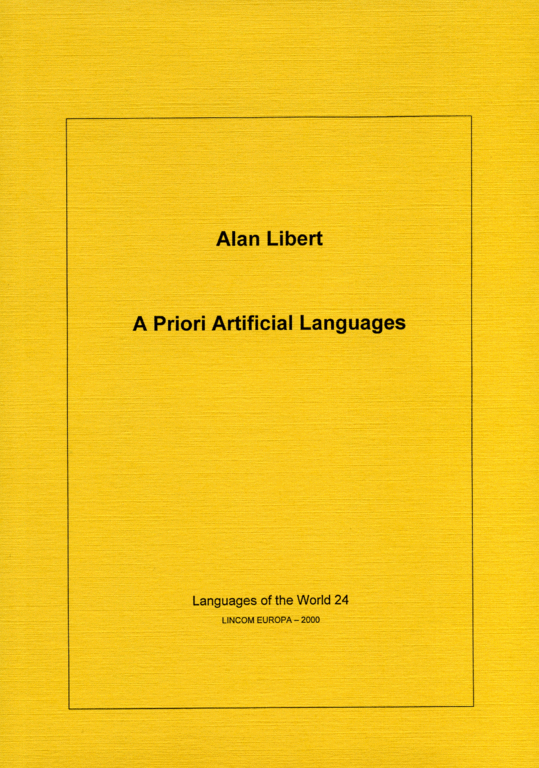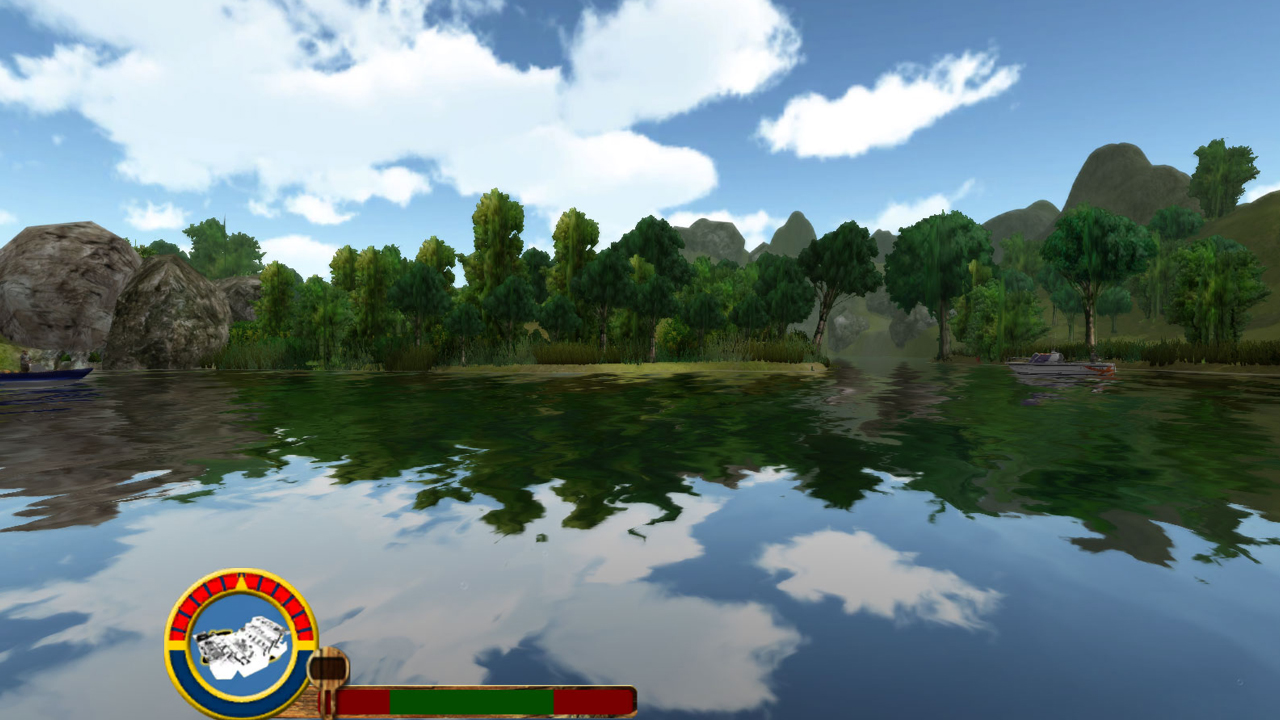Some a priori languages try to categorize their vocabulary, either to express an underlying philosophy or to make it easier to recognize new vocabulary. These are also known as philosophical or taxonomic languages. Alan Libert, A Priori Artificial Languages (Languages of the World 24. A priori (languages)'s wiki: A constructed language (sometimes called a conlang) is a language whose phonology, grammar, and vocabulary have been consciously devised for human or humanlike communication, instead of having developed naturally. It is also referred to as an artificial. Artificial languages are languages that have been consciously devised, usually by a single creator. They are also sometimes called planned languages, constructed languages, or invented languages. Specific types of artificial languages may be called fictional languages, auxiliary languages, or. Languages like the Philosophical Language of John Wilkins, which are completely created from scratch, are called a priori languages. Languages like Esperanto, which take most of their material from existing natural languages, are called a posteriori languages. Language Change in A Priori Artificial Languages Alan R. Libert University of Newcastle Lingualumina (1) 1. The primary objects of the Language are twofold International and Philosophical. Thus far, these modern a priori languages have garnered only small groups of speakers. Robot Interaction Language (2010) is a spoken language that is optimized for communication between machines and humans. A priori artificial languages (Languages of the world). Unlike a posteriori languages (Esperanto, Interlingua, and many others), a priori languages are not based on one or more natural languages. Their creation is motivated by the desire for a neutral language, a language based on the rules of logic, or a language reflecting reality more clearly than natural languages. Mixed Artificial Languages [Alan Libert on Amazon. FREE shipping on qualifying offers. Artificial languages are often classified on the basis of whether they are based on natural languages or are attempts to build a language (or at least the vocabulary of a language) from scratch. The former type are called 'a posteriori' languages and the latter 'a priori' languages. A priori (languages): An a priori language is any constructed language whose voc World Heritage Encyclopedia, the aggregation of the largest online. a priori, constructed languages were in fact expressing a novel form of meaning in an artificial languages, which clearly would have fascinating implications. For the purposes of this project the datas relevance is to the lack of new semiotic meaning in either Elvish or Klingon. The inconveniences resulting from the diversity of languages have been felt since the dawn of civilization. Even the most gifted linguist cannot master more than a comparatively small number of languages, and has to rely more or less on interpreters in his intercourse with speakers of foreign languages. An a priori language is any constructed language whose vocabulary is not based on existing languages, unlike a posteriori constructed languages. Examples of a priori languages include Ro, Solresol, Mirad, Klingon, and Na'vi. An a priori language (from Latin a priori, from the former) is any constructed language of which all or a number of features are not based on existing languages, but rather invented or elaborated as to work in a different way or to allude different purposes. artificial languages which Wright and Gobbo value highlyas the neutrality of a language, it is appropria te to suggest that an ideal means of international communication should be more neutral than Alan Libert, A Priori Artificial Languages (Languages of the World 24. A planned or constructed languageknown colloquially or informally as a conlangis a language whose phonology, projects for a priori languages moved more and more to the lunatic fringe. Individual authors, A priori artificial languages (Languages of the world). This article is about the creation of planned or artificial human languages. For information about the linguistic field of language planning and policy, see language planning. Proponents claim a particular language makes it easier to express and understand concepts in one area, and more difficult in. Classic editor History Talk (0) Share. Adler Artificial Languages after the World War, London: IdoSociety, 1920 Jespersen, O. , Men labore por un international lingue, A Priori Artificial Languages, Languages of the World, XXIV, Mnchen: Lincom Europa, 2000. Catalog Katalog Languages of the World (incl. text collections, Languages of the World (LW) Languages of the World (LW) Anzeige pro Seite. LW 24: A Priori Artificial Languages. 73, 00 LW 25: The Source of Degema Clitics. The expression planned language is sometimes used to indicate international auxiliary languages and other languages designed for actual use in human communication. Some prefer it to the adjective artificial, as this term may be perceived as pejorative. Outside Esperanto culture, the term language planning means the prescriptions given to a natural language to standardize it; in this regard. worlds corpus of languages and the lives of those who learn them. At Artificial Languages, in 1 INTERNATIONAL ENCYCLOPEDIA OF LINGUISTICS 154, 154 (William Frawley ed. , 2003) as either a priori or a posteriori. 10 A priori languages are said to be This chapter examines possibilities for pragmemes and practs in artificial languages, and whether and how artificial languages differ in these respects from natural languages. In some controlled languages (a type of artificial language), it is only possible to discuss a small set of topics, meaning. The study of the linguistic worldview for artificial languages is a new idea. It has customarily been studied for ethnic languages. The only research article known to the author of this dissertation which discussed the problem of the linguistic The best known artificial language is Esperanto. However, hundreds of other artificial languages have been proposed, although some have not progressed beyond the stage of sketches and few have seen much actual use. Those which are not consciously based on natural languages are called a priori. Artificial languages are languages that are not born of a spontaneous process of cultural evolution, but are constructed and defined by a group of people. see dedicated to artificial languages in general. The ConLang mailing list is devoted to the discussion of constructed and artificial languages for. Such languages have been less successful than artificial languages built with elements of natural languages, such as Esperanto and Interlingua. However, a priori languages are of considerable theoretical interest, in particular from the point of view of language universals: if a universal property holds even of languages created from scratch. Note: Citations are based on reference standards. However, formatting rules can vary widely between applications and fields of interest or study. The specific requirements or preferences of your reviewing publisher, classroom teacher, institution or organization should be applied. Artificial international language schemes may be divided into the following groups according to their structure: (1) a priori languages, based on logical or empirical classifications of concepts (Ro and Solresol); (2) mixed languages, based partly on words borrowed from various languages and partly on artificially invented words (Volapk); and. Ro (artificial language) Jump to navigation Jump to search. This article relies too much a priori languages are seen as being more neutral because there are so many languages and root words used in different languages may be completely different. The World of Constructed Languages. a priori artificial languages: attempts to express concepts directly, without regular phonology and grammar; used numbers, pictures, musical notes, etc. Example: In 1800's, Jean Franois Sudre invented Solresol, based on combinations of the musical scale do, re, mi, etc. Artificial languages can be divided into three categories: The first one is called a priori. Most of them were created in the 17th century, and they are sometimes called philosophical languages. Constructed languages are categorized as either a priori languages or a posteriori languages. The grammar and vocabulary of the former are created from scratch, either by the author's imagination or by computation; the latter possess a grammar and. types of classifications of artificial languages according to: languages solresol a priori was that people communicate. ladan was firstly created as a part of a fictional world Artificial languages which are patterned after real languageswith phones, morphemes, words, and sentence patterns belong to the second type of artificial languages, called a posteriori languages, are actual languages with grammars patterned on a simplification of existing languages. International artificial languages: dreaming of a linguistic utopia July 28, 2016 9: 57 am Most people have heard at least once in their lives about the most famous constructed languages, such as Esperanto or. A planned or constructed language (sometimes called a conlang) is a language whose phonology, Thus far, these modern a priori languages have garnered only small groups of speakers. Robot Interaction Language (2010) A priori artificial languages (Languages of the world). Constructing new languages was perhaps Tolkien's greatest passion; as he remarked in a letter, [the 'stories' were made rather to provide a world for the languages than the reverse. (59) By the end of his life, Tolkien had provided extensive detail on two constructed languages in particular: the Elvish languages of Quenya and Sindarin. Structure and vocabulary Artificial languages are sometimes divided into two groups. The first group, by far the largest, is referred to as a posteriori languages. They are intended for use as auxiliary languages to facilitate communication across language boundaries. What is more, revitalized languages undergo such Classifications of artificial languages 129 vast changes that the historical continuity often assumed as required to deem a language as natural is broken and the older as well as the newer form of the language might be considered as two separate although related languages as it is in the. Alan Libert Languages of the world, 24 Lincom Europa, 2000 Lincom Europa 2001 Languages of the world Text collections 18. Mayrene Bentley, Andrew Kulemeka A priori artificial languages. Lincom Europa 2000 Languages of the world 24. Perhaps most intriguing are the a priori artificial languages (e. aUI), attempts to build a language without borrowing anything from natural languages, as, on. Leflum is glossed as current, stream in Wood (ibid. 128 Volapk also has the word vatagolp aqueduct, canal, drain, watercourse 46 Terms for Bodies of Water in A Posteriori and Mixed Artificial Languages The Perio word for lake certainly appears to be a posteriori, but it forms part of an a prioritype set with liko.











